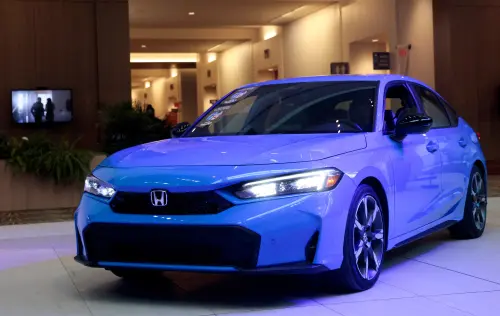Honda has made the decision to produce its upcoming Civic hybrid model in the U.S. state of Indiana instead of Mexico to avoid potential tariffs on one of its top-selling vehicles. This shift reflects the adjustments manufacturers are making in response to U.S. President Donald Trump's proposed tariffs on goods from Mexico and Canada. While other automakers have expressed concerns about these tariffs, Honda's decision marks the first tangible action by a major Japanese car company.
Initially planning to manufacture the next-generation Civic in Guanajuato, Mexico, Honda faced challenges due to increasing costs in Indiana and Canada. The production of the new Civic model is now scheduled to commence in Indiana from May 2028, with an estimated annual output of around 210,000 units. In case demand surpasses local production, Honda intends to source from countries not affected by tariffs.
While the company spokesperson refrained from commenting on the production plan changes, they emphasized Honda’s commitment to adapting to demand and the business landscape by optimizing production and distribution globally.
Chief Operating Officer Shinji Aoyama had previously highlighted the possibility of relocating production should the U.S. impose permanent tariffs on imported vehicles, underscoring the potential impact of such tariffs on industries with fixed production setups and market-specific manufacturing.
With Honda selling over 1.4 million vehicles in the U.S. last year, including Acura models, the Civic proved to be a top performer with more than 240,000 units sold, positioning it as the second-best selling Honda model after the CR-V. The Civic’s popularity, characterized by its affordability, resulted in a 21% increase in U.S. sales last year.
Furthermore, about 40% of Honda vehicles sold in the U.S. are imported from Mexico and Canada, while approximately 60,000 cars produced in the U.S. are exported to these countries. Any retaliatory tariffs from Mexico or Canada could potentially result in increased costs for Honda.
